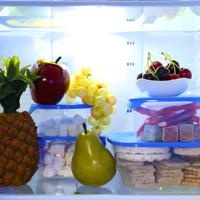In times of unexpected crises, having a plan for emergency cooking can help you to stay nourished and calm. Whether facing a natural disaster, power outage, or other emergencies, knowing how to prepare food with limited resources is crucial. Let's explore some practical methods and tips to prepare meals during challenging times.
Understanding Your Resources
First, assess what you have on hand. Inventory your non-perishable food items, evaluate your cooking equipment, and consider any special dietary needs for your family. Remember, simple meals can be nutritious and comforting. Here are some typical supplies you might have ready:
- Canned goods (soups, vegetables, beans)
- Dried grains (rice, pasta)
- Nut butters and jams
- Protein sources (canned meats, legumes)
- Staples (spices, oil, sugar)
Alternative Cooking Methods
Cooking methods will vary based on what resources and equipment are available. Below are a few possible alternatives if traditional stoves are unusable.
Outdoor Grills
Gas or charcoal grills can be a great option for cooking outdoors. They're easy to use, and many people already know how to cook on them. Here’s a simple procedure:
- Grill Setup: Ensure proper ventilation and assemble your grill safely outdoors.
- Cooking: Use direct or indirect heat depending on the dish. For indirect cooking, place food away from the coals.
- Safety: Keep a fire extinguisher nearby and monitor the grill continuously.
Camp Stoves
Backpacking or camping stoves can serve well in emergencies. These portable stoves run on propane or butane, allowing for quick setup and use:
- Fuel Usage: Have extra fuel supplies; propane canisters are standard and versatile.
- Cooking Options: Perfect for boiling water, heating soups, or frying simple ingredients.
- Caution: Cook outdoors or in well-ventilated spaces to prevent carbon monoxide buildup.
Solar Ovens
A solar oven harnesses sunlight to cook food, making it a sustainable option. However, its efficiency relies on sunny weather:
- Setup: Place the oven in direct sunlight for best results.
- Cooking Duration: Be patient; cooking times can be longer compared to traditional methods.
- Types of Meals: Baking, roasting, or slow cooking work well with solar ovens.
DIY Rocket Stoves
A rocket stove can be improvised if you have access to clay, bricks, or similar materials. You can fuel it with small sticks and biomass, making it efficient and easy to build:
- Design: Create a narrow combustion chamber that increases air flow.
- Fuel Source: Use minimal amounts of biomass like twigs or dry grass.
- Benefits: Produces intense heat, suitable for boiling and frying.
Simplified Meal Preparation
Once you’ve chosen your cooking method, consider dishes that are easy to prepare and require few ingredients:
- Stews and Soups: Combines canned vegetables, pre-cooked grains, and proteins.
- Rice Dishes: Use quick-cooking rice options paired with canned beans and spices.
- Pancakes or Flatbreads: If you have flour, water, and a bit of salt, you can make simple bread substitutes.
Allow creativity to guide you; blend flavors that you enjoy and can provide enough sustenance.
Keeping Safety in Mind
During emergency situations, food safety becomes crucial. Here are a few pointers to ensure meals are prepared safely:
- Temperature Management: Keep perishable items cool if possible; use coolers with ice packs.
- Hygiene Practices: Wash hands frequently and clean utensils and surfaces when possible.
- Check Expiry Dates: Verify your food supplies are still within their safe usage dates.
A Personal Note
As someone who relies heavily on a structured plan during unpredictable times, I've learned that maintaining flexibility and adaptability is vital. Each emergency situation is unique, and there isn't a one-size-fits-all solution. Embracing a calm mindset and understanding your available resources can make a significant difference.
In Conclusion
Cooking during emergencies presents a unique set of challenges, but with preparation and a bit of resourcefulness, it's possible to nourish your loved ones. Try experimenting with the above techniques, and don't hesitate to reach out to local resources or community groups for additional support.
By fostering a sense of preparedness, you can navigate through emergencies with confidence, ensuring that you're well-equipped for the unexpected.
References:
- "The Prepper's Water Survival Guide" by Daisy Luther.
- "The Provident Prepper: A Common-Sense Guide to Preparing for Emergencies" by Kylene and Jonathan Jones.
- Ready.gov - Official website of the Department of Homeland Security.




